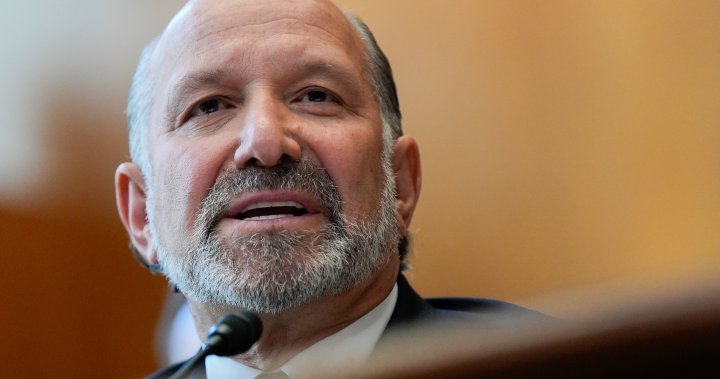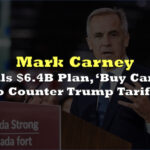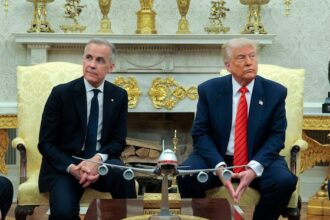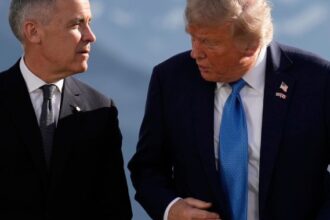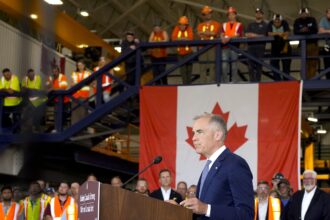In a significant shift that has sent ripples through North American trade relations, President-elect Donald Trump’s team is signaling that Canada may not be exempt from the administration’s planned steel and aluminum tariffs. Howard Lutnick, Trump’s nominee for Commerce Secretary, made the surprising revelation during his Senate confirmation hearing Tuesday, declaring that allies would need to “defend themselves” in the new economic landscape.
“We’re going to put tariffs on foreign steel and aluminum coming to the United States,” Lutnick stated firmly before the Senate Commerce Committee. When pressed specifically about Canada’s status by Senator Peter Welch of Vermont, Lutnick responded with a stance that departs from traditional alliance considerations: “I think our allies need to defend themselves.”
This development marks a concerning turn for Canadian industry, particularly after the hard-fought exemptions secured during Trump’s first term. The original 2018 tariffs—25 percent on steel and 10 percent on aluminum—initially included Canada before exemptions were negotiated through the USMCA trade agreement that replaced NAFTA.
Canadian officials have already begun diplomatic efforts to address the potential threat. Industry Minister François-Philippe Champagne emphasized the deeply integrated nature of the cross-border steel and aluminum supply chains during his response to reporters.
“When you look at steel and aluminum in North America, I think most people would agree that we have a very integrated supply chain,” Champagne noted. “I think facts matter in these discussions.”
The economic stakes could hardly be higher. Canada exported approximately $7.9 billion in steel products to the United States in 2023, with aluminum exports valued at another $9.5 billion, according to Statistics Canada data. These industries employ tens of thousands of Canadian workers, particularly in manufacturing heartlands like Ontario and Quebec.
Trade experts view Lutnick’s comments as part of a broader Trump administration strategy to use tariffs as both economic and diplomatic leverage. Catherine Cobden, president of the Canadian Steel Producers Association, expressed measured concern while highlighting the mutual benefits of the current trading relationship.
“Canadian steel producers have long maintained fair and balanced trade with our American counterparts,” Cobden said in a statement. “Our integrated supply chains strengthen North American manufacturing competitiveness against global competitors.”
The potential tariffs align with Trump’s “America First” economic vision but create tension with his simultaneous desire to strengthen North American manufacturing against Chinese competition. This contradiction hasn’t gone unnoticed by economic analysts tracking the incoming administration’s policy signals.
“There’s a fundamental inconsistency in threatening tariffs against your closest trading partner while trying to build North American manufacturing resilience,” said Mark Warner, a Toronto-based international trade lawyer. “Canadian steel and aluminum production actually enhances U.S. economic security.”
The uncertainty comes at a particularly challenging time for Canadian industry, which is already navigating competitive pressures from subsidized production in other regions and the transition toward greener manufacturing processes.
Prime Minister Justin Trudeau’s government faces the complex task of navigating this economic challenge while maintaining productive relations with the incoming Trump administration across numerous policy fronts. During the previous round of tariff negotiations, Canada ultimately responded with retaliatory measures targeting American products before exemptions were secured.
As January 20th inauguration approaches, Canadian officials and industry leaders are preparing contingency plans while emphasizing the mutual harm tariffs would inflict on both economies. The question now facing policymakers on both sides of the border is whether economic integration built over decades can withstand the pressures of a renewed protectionist agenda, or if North American manufacturing competitiveness will be sacrificed in the pursuit of domestic political objectives.
Will the incoming Trump administration recognize that tariffs against allies ultimately weaken rather than strengthen America’s economic position in its competition with China?

